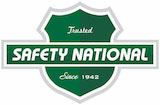School shooters usually show these signs of distress long before they open fire, our database shows
Our initial analysis of the school shooting data found some noteworthy patterns. All mass school shooters since 1966 had a large number of risk factors for violence. Forty-five percent had witnessed or experienced childhood trauma, 77 percent had mental health concerns, as evidenced in a prior diagnosis, previous counseling or hospitalization, or medication use, and 75 percent had an interest in past shootings, as evidenced in their writing, social media posts or other activities. The majority of mass school shooters – 87 percent – showed signs of a crisis, as exhibited in their behavior, before the shooting. Seventy-eight percent revealed their plans ahead of time, often on social media. As juveniles, they also used guns that they stole from parents, caregivers and other significant adults in their lives. Our analysis found that about 80 percent of mass school shooters were suicidal. These findings make it clearer why current strategies are inadequate.








